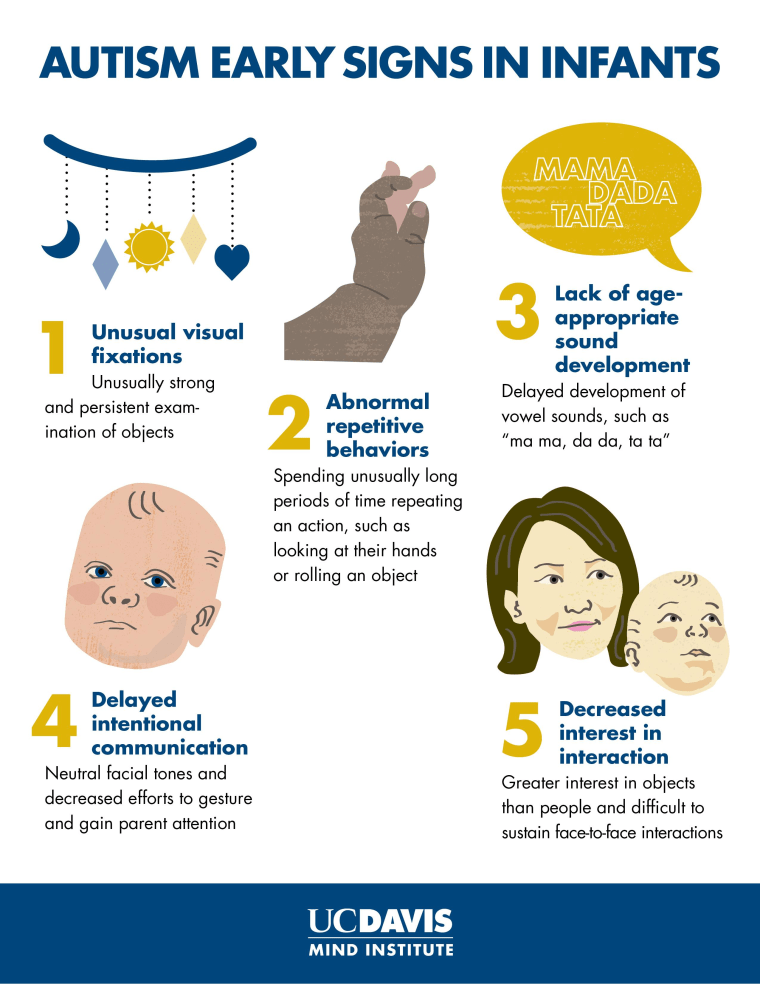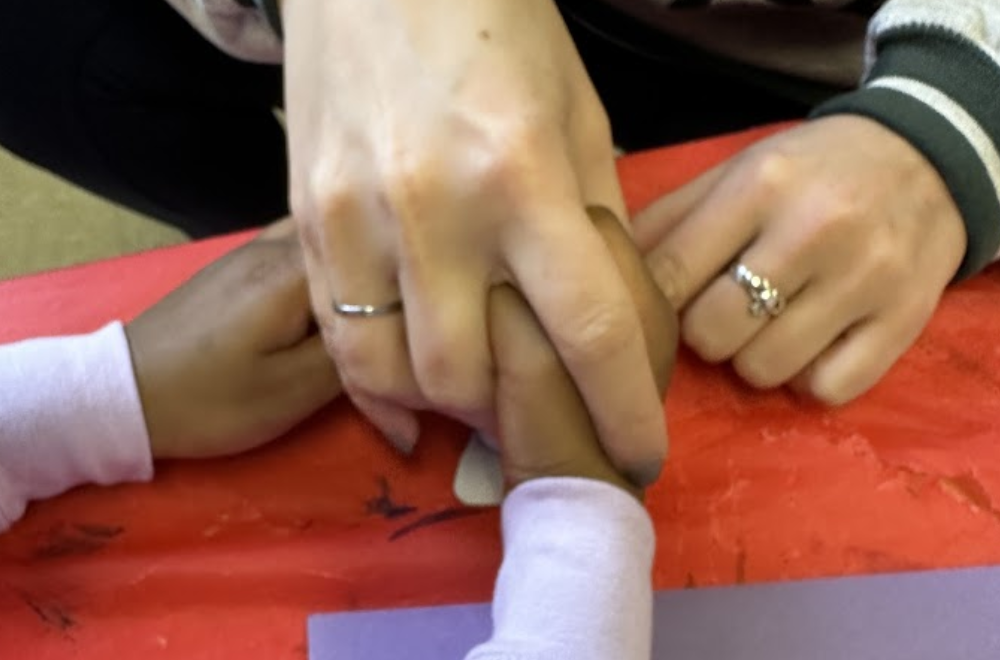Understanding the Impact of Behavioral Autism on Life and Social Interactions
You may not recognize exactly how deeply behavioral autism affects daily life and social communications. People on the range usually browse a world loaded with interaction difficulties and sensory overload. These challenges can lead to stress and isolation, impacting their partnerships and total wellness. Understanding these subtleties is vital for fostering supportive atmospheres. What techniques can we implement to develop more significant connections and comprehensive areas? The solutions could stun you.
Specifying Behavior Autism and Its Qualities
Behavior autism, frequently described as autism range disorder (ASD), includes an array of conditions defined by challenges in social communication, communication, and repeated actions. You might see that individuals with ASD often struggle to translate social signs, which can lead to misunderstandings in discussions. They might find it hard to establish eye call or take part in tiny talk, making social circumstances really feel overwhelming.
Communication problems can manifest in numerous ways, from delayed speech growth to a preference for utilizing less words. Recurring actions, such as hand-flapping or shaking, can function as coping mechanisms to handle stress and anxiety or sensory overload. These qualities can exceptionally affect day-to-day live, making it important for you to comprehend and sustain those with ASD. By identifying these traits, you can foster an atmosphere that promotes acceptance and motivates reliable communication, helping people with autism flourish in their everyday communications.
The Range of Autism: Comprehending Variability in Behavior
Autism spectrum problem (ASD) isn't a one-size-fits-all medical diagnosis; it varies extensively amongst people. You may observe that some individuals with ASD show moderate signs and symptoms, while others may encounter extra substantial difficulties. This variability can show up in habits, interests, and sensory level of sensitivities. You may run into people who are very verbal and involve easily in discussions, while others may prefer solitary tasks or communicate non-verbally.
Moreover, the way people with ASD respond to sensory input can vary greatly; some may be bewildered by intense lights or loud sounds, whereas others flourish in promoting atmospheres. The range also consists of differences in social interactions; some people might battle to interpret social signs, while others navigate social setups with loved one convenience. Recognizing this irregularity is essential, as it helps you value everyone's unique experience and dressmaker support to their specific demands, cultivating a much more inclusive environment for every person.
Interaction Difficulties Dealt With by People With Autism
When you engage with people on the autism spectrum, you may observe their distinct interaction difficulties. They commonly face difficulties with both nonverbal and spoken hints, which can affect their social communications. Recognizing these obstacles is vital for fostering far better links and assistance.

Verbal Communication Troubles
Many people on the autism range experience verbal communication troubles that can significantly impact their daily interactions. You could locate it testing to share your ideas, feelings, or requires plainly. This can cause frustration for both you and those around you, as misunderstandings take place. You may deal with launching conversations, maintaining a subject, or understanding nuances in speech. Commonly, you might choose using simple language or recurring expressions, which can restrict your capability to participate in deeper discussions. Your tone, volume, or speed may not align with social assumptions, causing others to misinterpret your purposes. Acknowledging these obstacles can aid you and your support network develop methods to enhance interaction and foster much better links with others in your daily life.
Nonverbal Communication Barriers
Spoken interaction isn't the only obstacle individuals on the autism range face; nonverbal communication obstacles can be just as significant. These difficulties can lead to misconceptions or misconceptions of social cues, making communications really feel confusing or frustrating. By attending to nonverbal interaction, you can find approaches to enhance your social experiences and enhance your total quality of life.
Social Communication Effects
Social interactions can frequently really feel frustrating due to the distinct communication challenges encountered by individuals with autism. Recognizing these difficulties can aid you discover strategies to improve communication, such as practicing social skills in secure setups or making use of visual help. Comprehending your needs enables you to browse social communications with better self-confidence and ease.
Social Communication and Relationship Structure in Autism
While structure relationships can be challenging for check here people with autism, understanding their special perspectives and communication styles can promote meaningful connections. You may see that numerous people on the range favor direct communication and might fight with social hints or tiny talk. By being simple in your communications, you can help produce an atmosphere where they feel comfy.
Take the time to pay attention and observe how they express themselves. This insight can direct you in guiding discussions better. Involving in shared rate of interests can additionally work as a bridge to much deeper links. Whether it's a pastime, a favored show, or a mutual enthusiasm, these common threads can open doors to relationship.
Day-to-day Live Regimen: Navigating Obstacles and Techniques
Maneuvering day-to-day live routines can be specifically testing for individuals with autism, particularly when unanticipated adjustments happen. You might find comfort in having a structured timetable, as it aids you expect what's following. When disruptions happen, it's normal to really feel overwhelmed or anxious. To navigate these difficulties, think about carrying out aesthetic routines or checklists. These tools can provide quality and confidence.
Developing a regimen that includes sensory breaks can also be helpful. This assists create an understanding atmosphere.
Lastly, method mindfulness techniques to take care of anxiety and anxiety. Straightforward breathing exercises or basing methods can make a considerable distinction. By integrating these techniques, you can enhance your daily routine and decrease interruptions, making life feel more manageable.
Toughness and Abilities of Individuals on the Autism Spectrum
Understanding life regimens is just one element of the autism experience. Several people on the autism range have amazing strengths and capacities that set them apart. You might discover that your attention to detail is phenomenal, allowing you to master jobs that require accuracy and focus. Your capability to think outside the box can cause cutting-edge remedies in various scenarios.
In addition, your memory abilities typically radiate, specifically in locations of passion. Aba Therapist Near Me. This knack for keeping details can make you a valuable source in fields like modern technology, scientific research, or art. You may also exhibit strong aesthetic reasoning, allowing you to picture complicated ideas and fix issues creatively
Additionally, your distinct perspective on the globe can cultivate compassion and understanding in others, enhancing social interactions. Embracing these toughness not just increases your confidence yet additionally assists others appreciate the varied skills you bring to the table.
Creating Comprehensive Atmospheres for People With Autism
Developing inclusive environments for people with autism starts with designing sensory-friendly rooms that deal with their distinct demands. You can likewise cultivate possibilities for social communication, assisting to develop relationships and connections. By making these adjustments, you'll add to a more inviting environment for every person.
Designing Sensory-Friendly Spaces
While developing sensory-friendly rooms, it's crucial to assess the one-of-a-kind requirements of people with autism. Begin by choosing relaxing colors and soft illumination to create a comforting atmosphere. When overwhelmed, include quiet areas where individuals can charge and retreat. You'll intend to reduce loud sounds and distractions, using soundproof products or white noise machines to assist preserve peace. Consider tactile aspects like soft textiles or fidget-friendly objects that can supply convenience. Establish that areas are adaptable, allowing for simple reformation to accommodate different tasks. Include visual timetables or clear signs to help individuals navigate the room with confidence. By thoughtfully incorporating these components, you can create an inviting ambience that sustains sensory needs and promotes overall wellness.
Promoting Social Interaction Opportunities
Creating sensory-friendly rooms not just addresses private comfort but also sets the phase for purposeful social communications among people with autism. To promote these communications, develop inclusive environments that invite engagement. Arrange organized activities, like art classes or group games, website that encourage collaboration without overwhelming sensory input. Use visual help and clear interaction to help every person involve pleasantly. Motivate peer mentoring, matching people with autism with supportive peers who can guide them via social scenarios. Furthermore, think about hosting routine community occasions that commemorate neurodiversity, promoting acceptance and understanding amongst all participants. By implementing these strategies, you can boost social chances, helping people with autism develop friendships and reinforce their social skills in a safe, welcoming environment.

Regularly Asked Questions
Exactly How Can Pals Support Somebody With Behavioral Autism?
You can sustain a pal with behavior autism by holding your horses, listening proactively, and valuing their boundaries. Participate in tasks they enjoy, communicate freely, and develop a comfy environment where they feel valued and comprehended.
What Resources Are Readily Available for Parents of Children With Autism?
You can check out numerous sources for parents of kids with autism, including support teams, educational websites, and regional social work. Getting in touch with other parents can additionally give beneficial understandings and shared experiences to assist navigate challenges.
Can Behavioral Autism Change With Time?

Yes, behavioral autism can transform in time. You might observe shifts in communication, social abilities, and habits as your child expands. Early intervention and assistance frequently play essential functions in these developing modifications.
Just How Do Sensory Sensitivities Influence Every Day Life?
Sensory sensitivities can make daily experiences frustrating. You may have problem with brilliant lights or loud sounds, resulting in stress and anxiety or evasion. Locating settings that suit your requirements can greatly enhance your convenience and overall every day life.
What Are Typical Misconceptions Regarding Behavioral Autism?
You might think behavioral autism only influences interaction skills, but it's more facility. Numerous presume individuals lack empathy or knowledge, which isn't real. Recognizing these false impressions helps foster acceptance and support for those on the range.
Behavioral autism, frequently referred to as autism spectrum condition (ASD), includes a range of problems characterized by obstacles in social communication, communication, and recurring actions.Social communications can usually really feel overwhelming due to the distinct communication difficulties dealt with by individuals with autism.Creating sensory-friendly rooms not just addresses individual convenience but also sets the phase for meaningful social communications amongst people with autism. Urge peer mentoring, combining people with autism with helpful peers that can guide them via social situations. By executing these approaches, you can improve social chances, aiding people with autism build friendships and enhance their Aba Therapist Near Me social abilities in a safe, inviting environment.